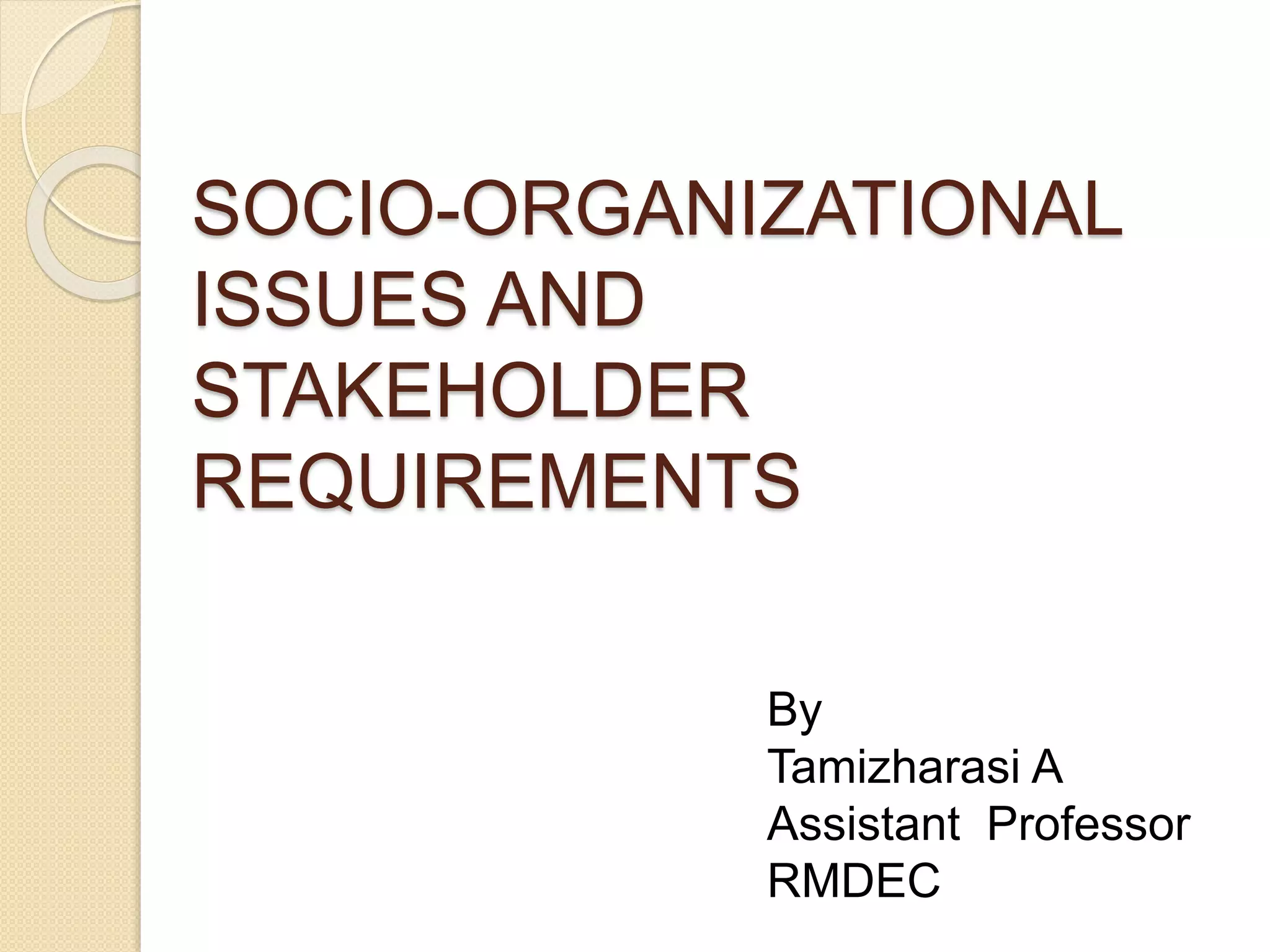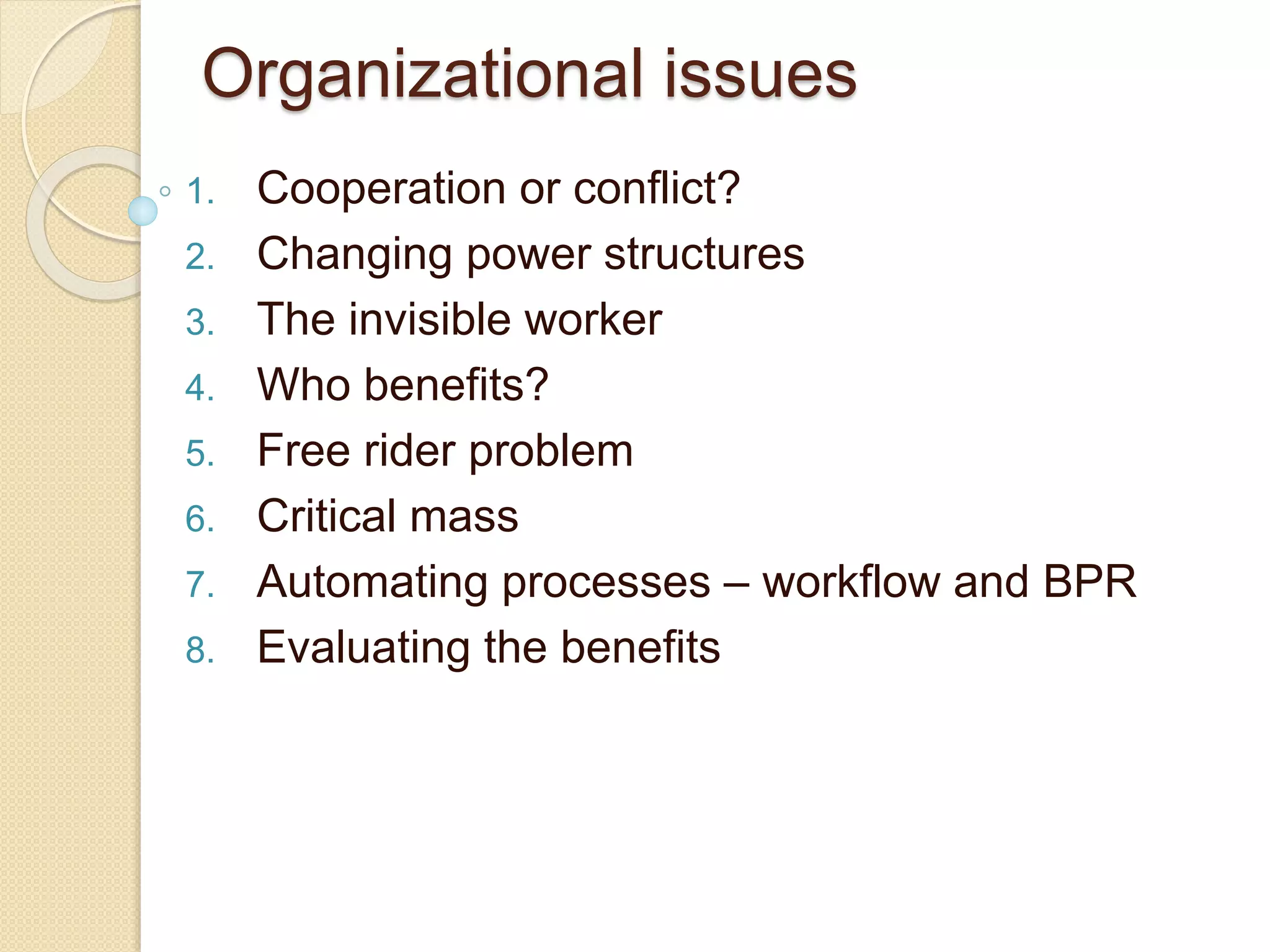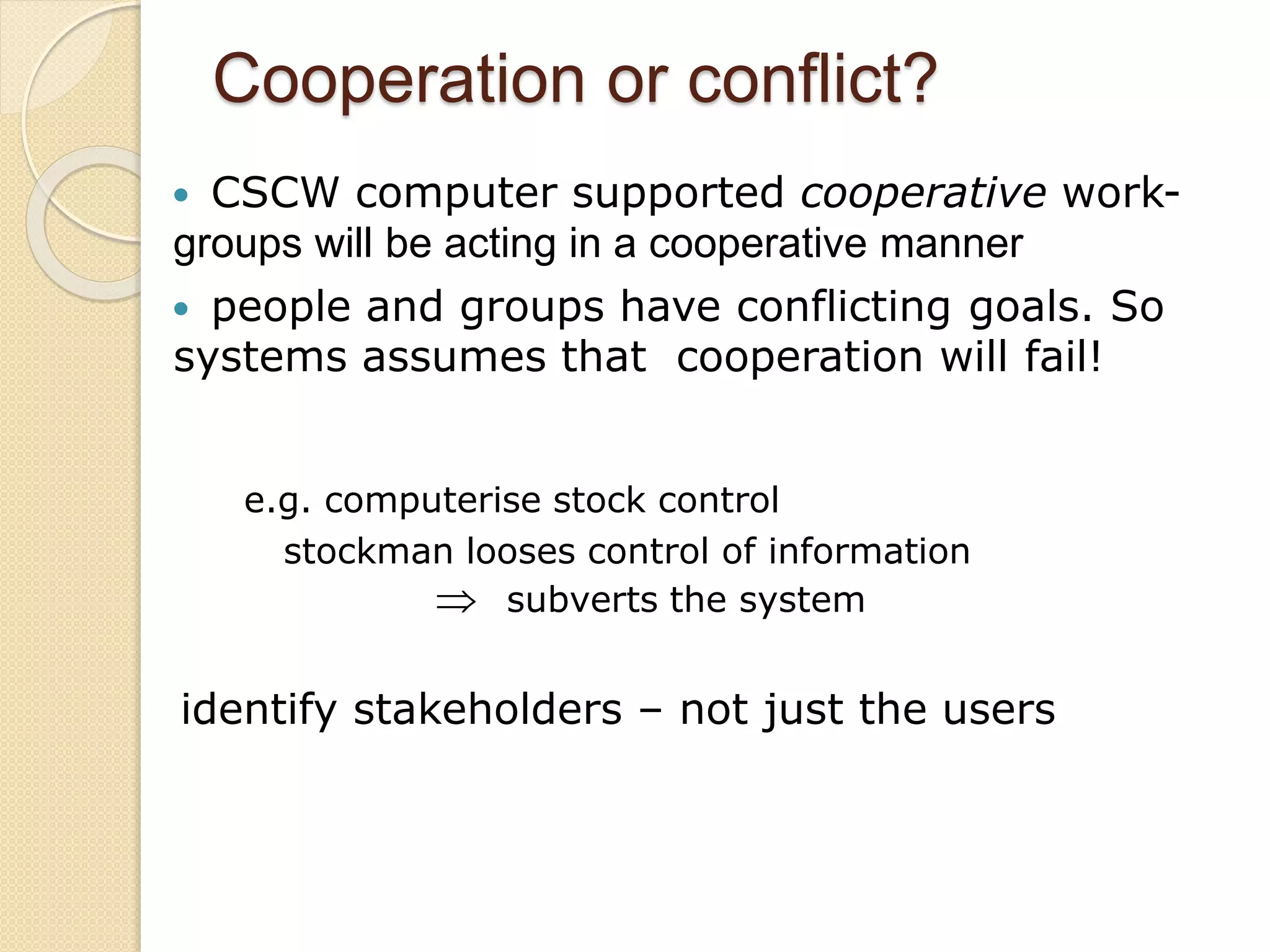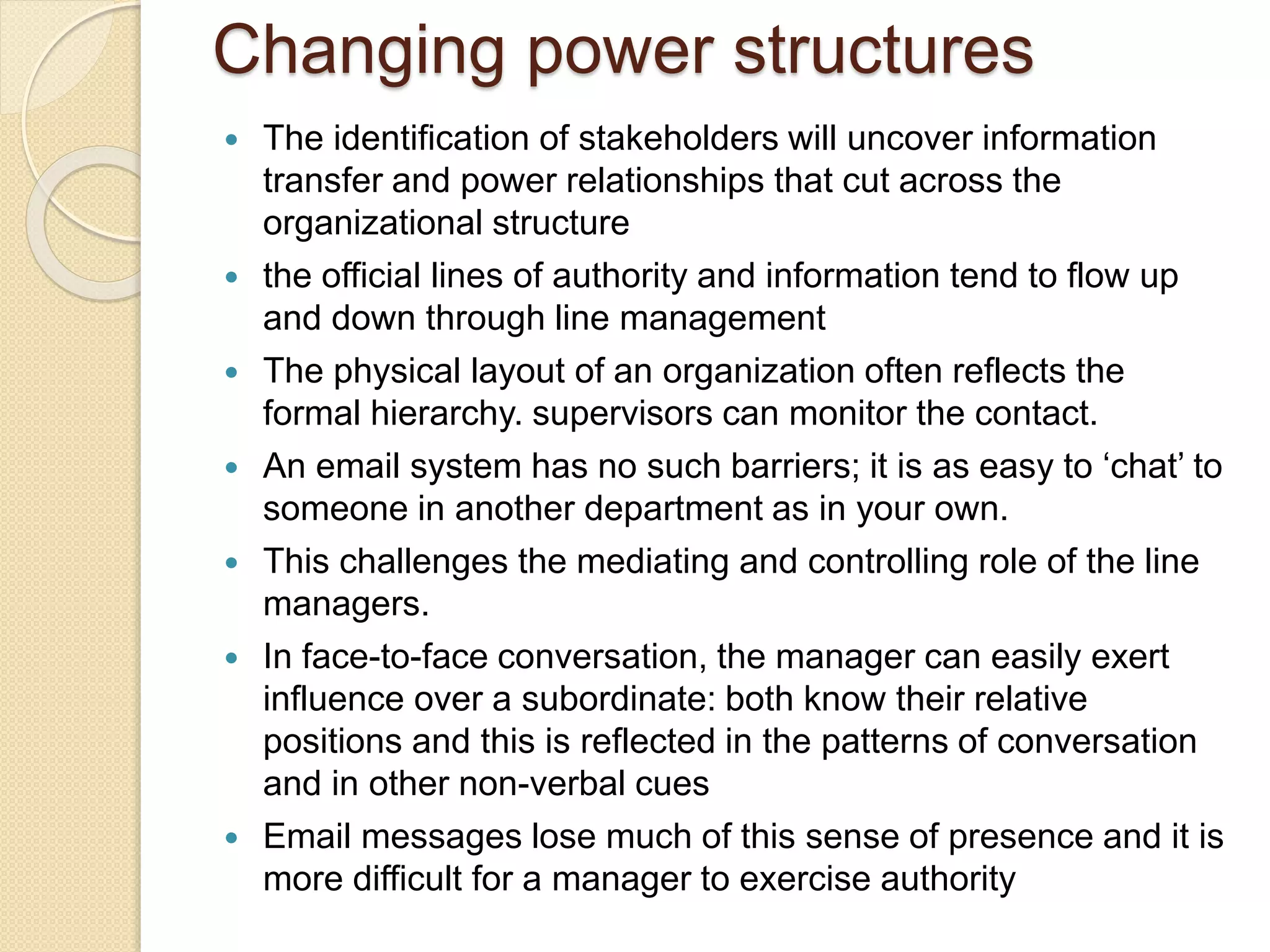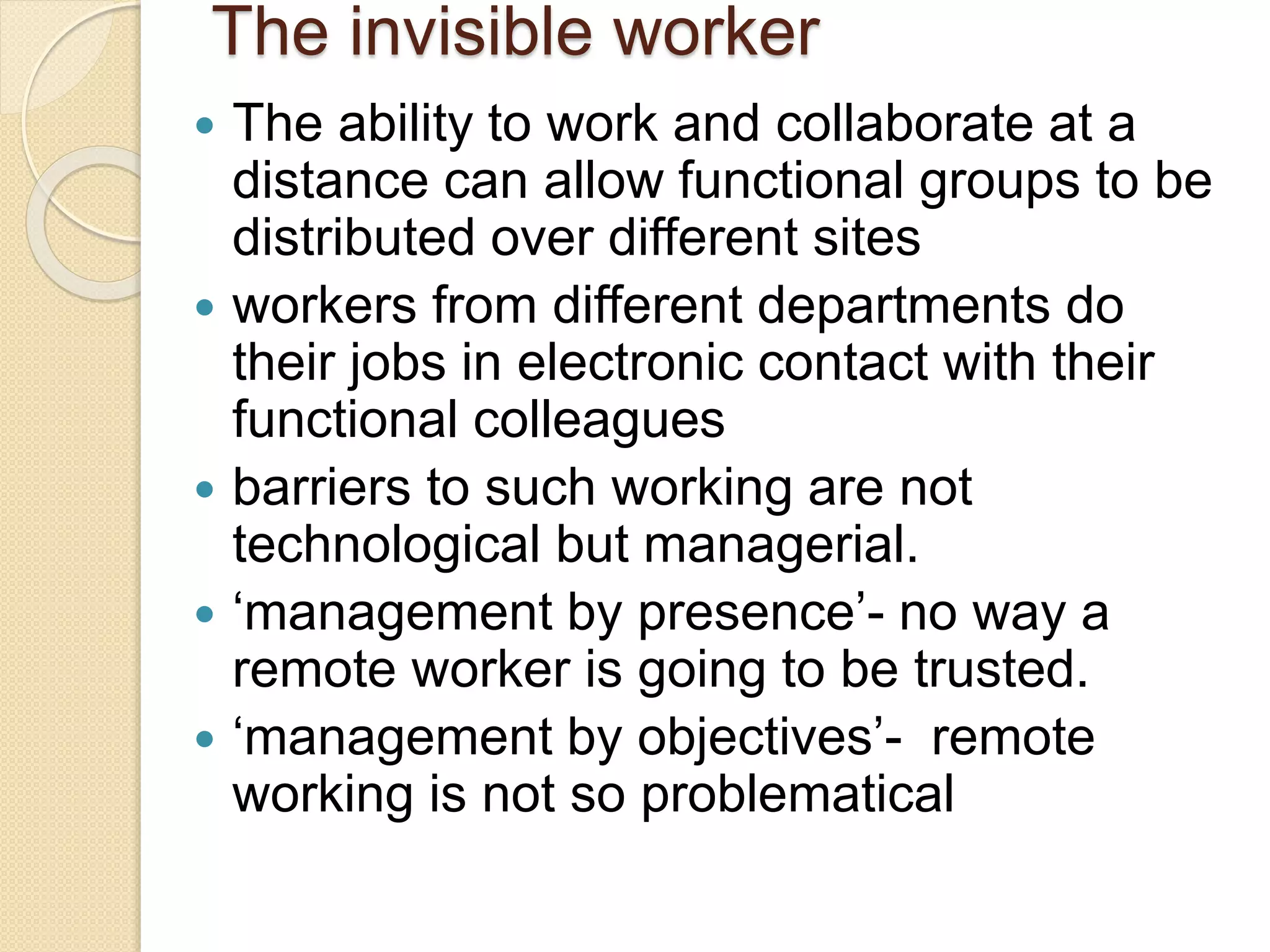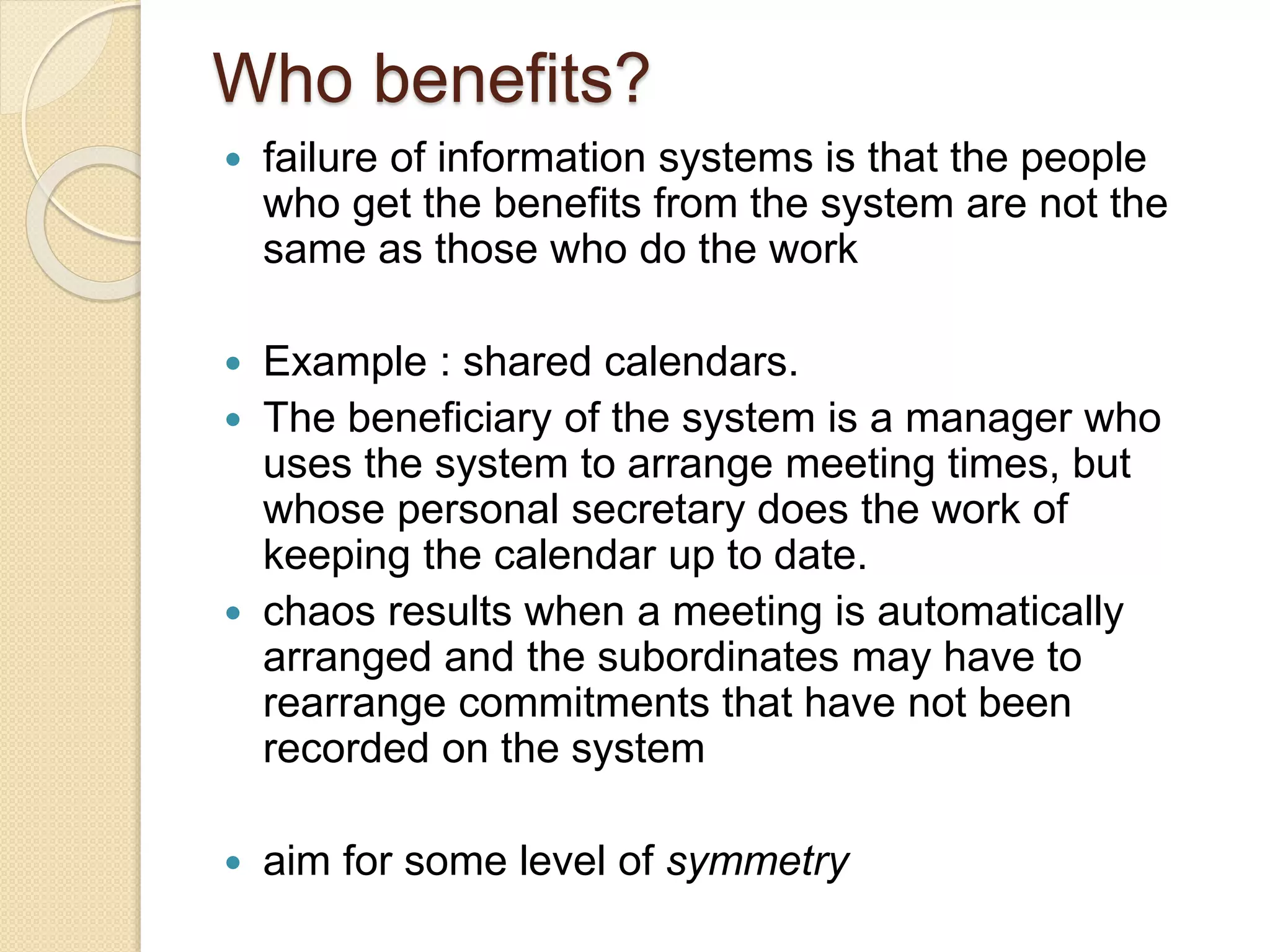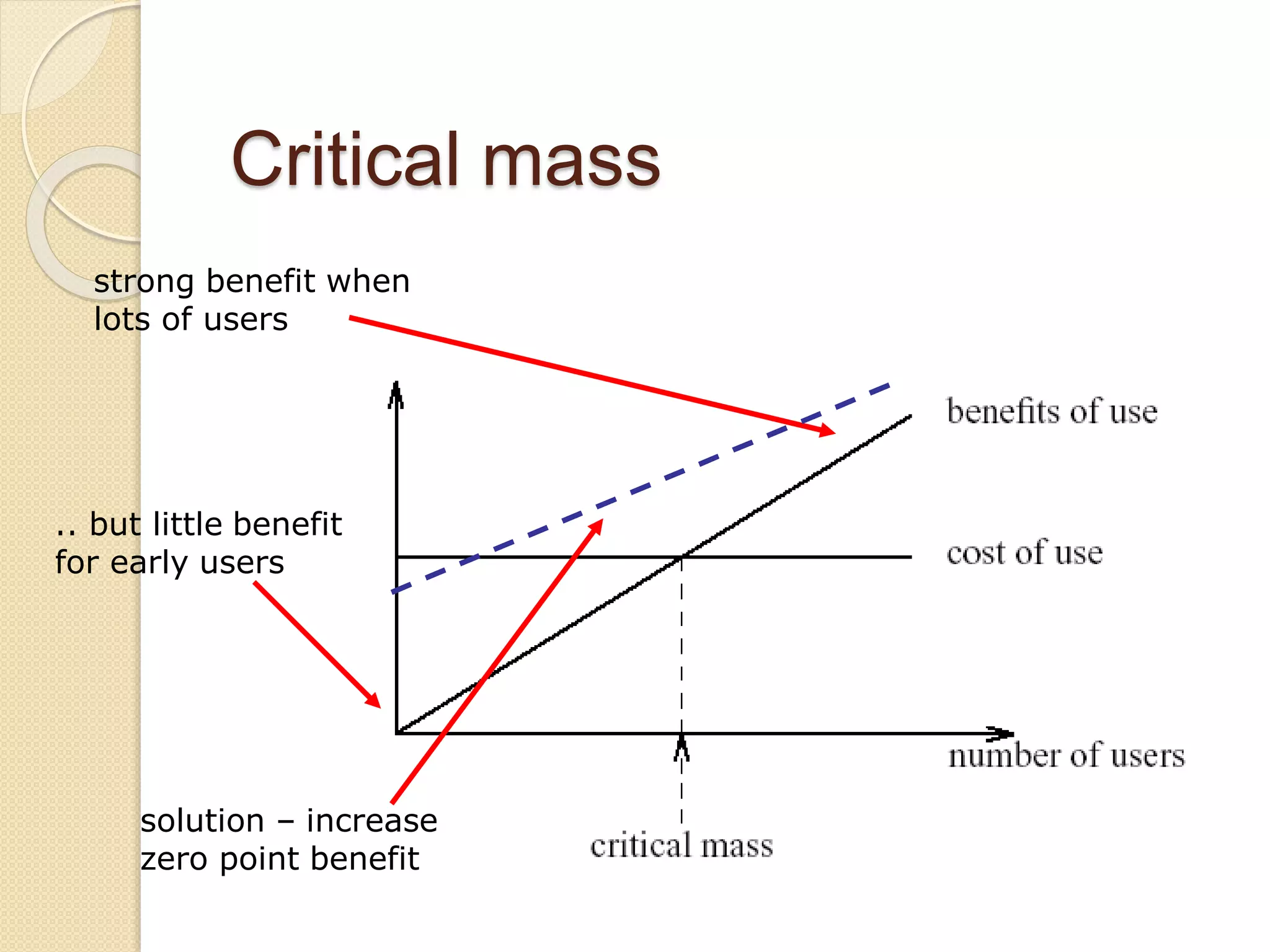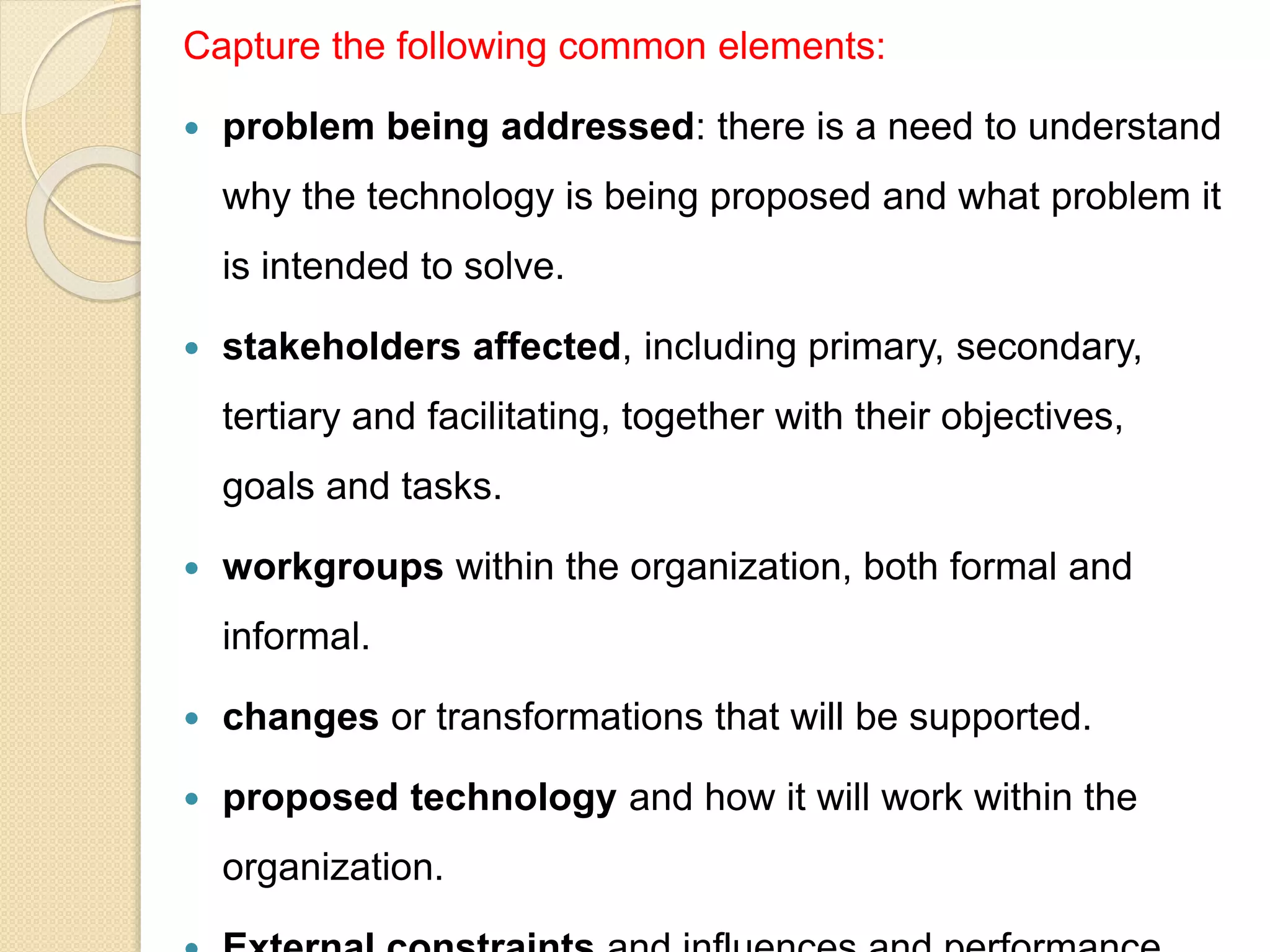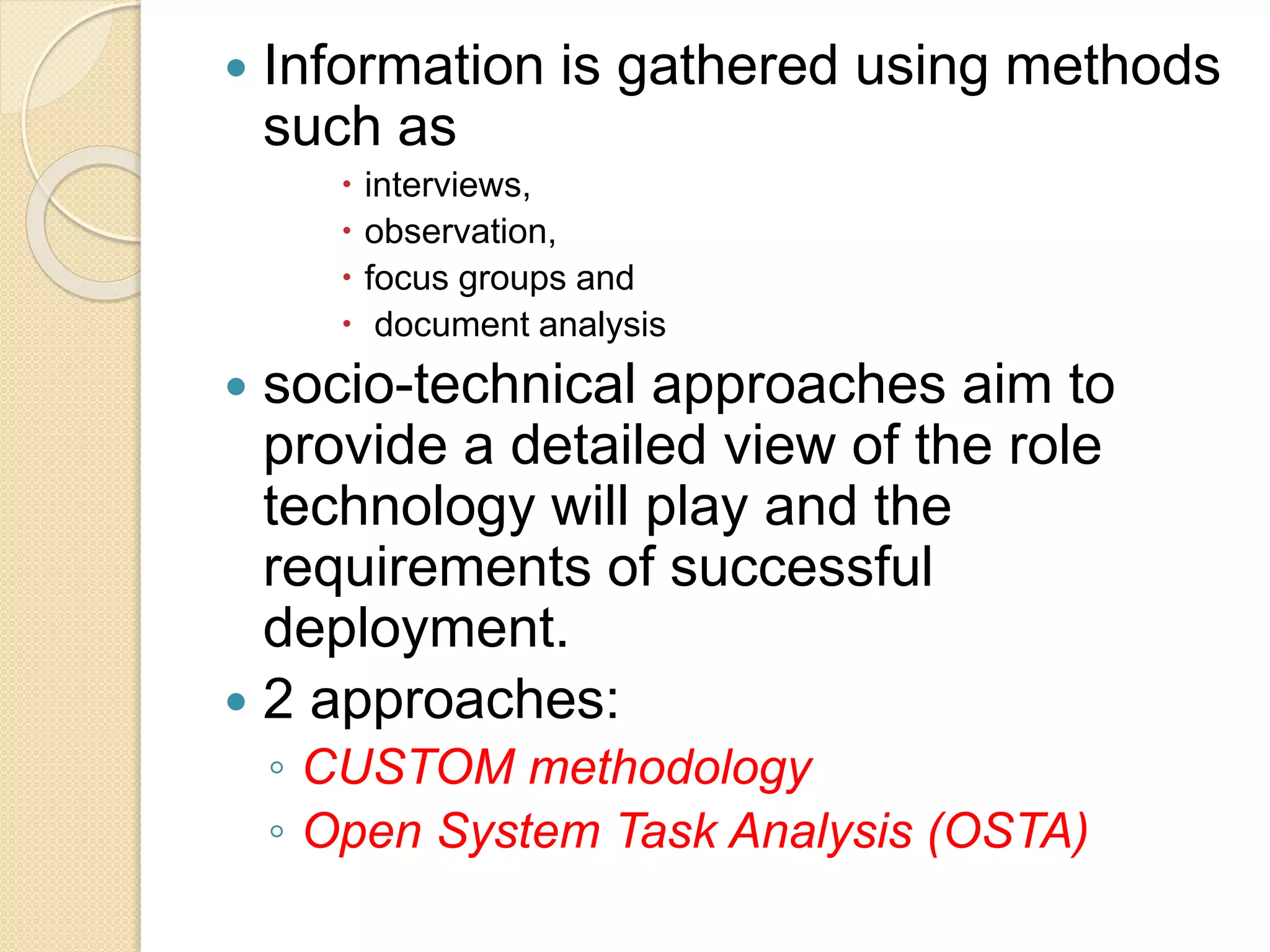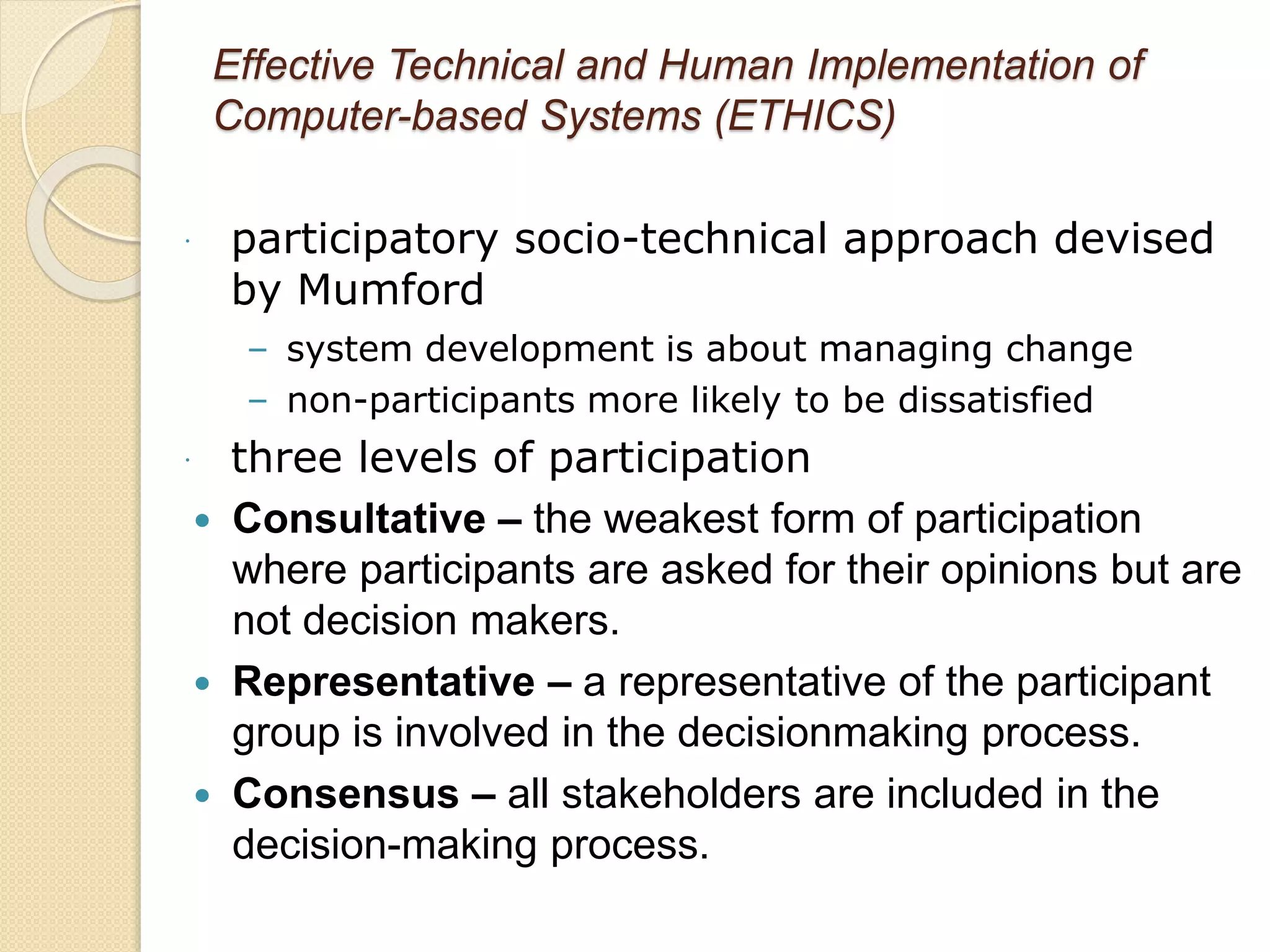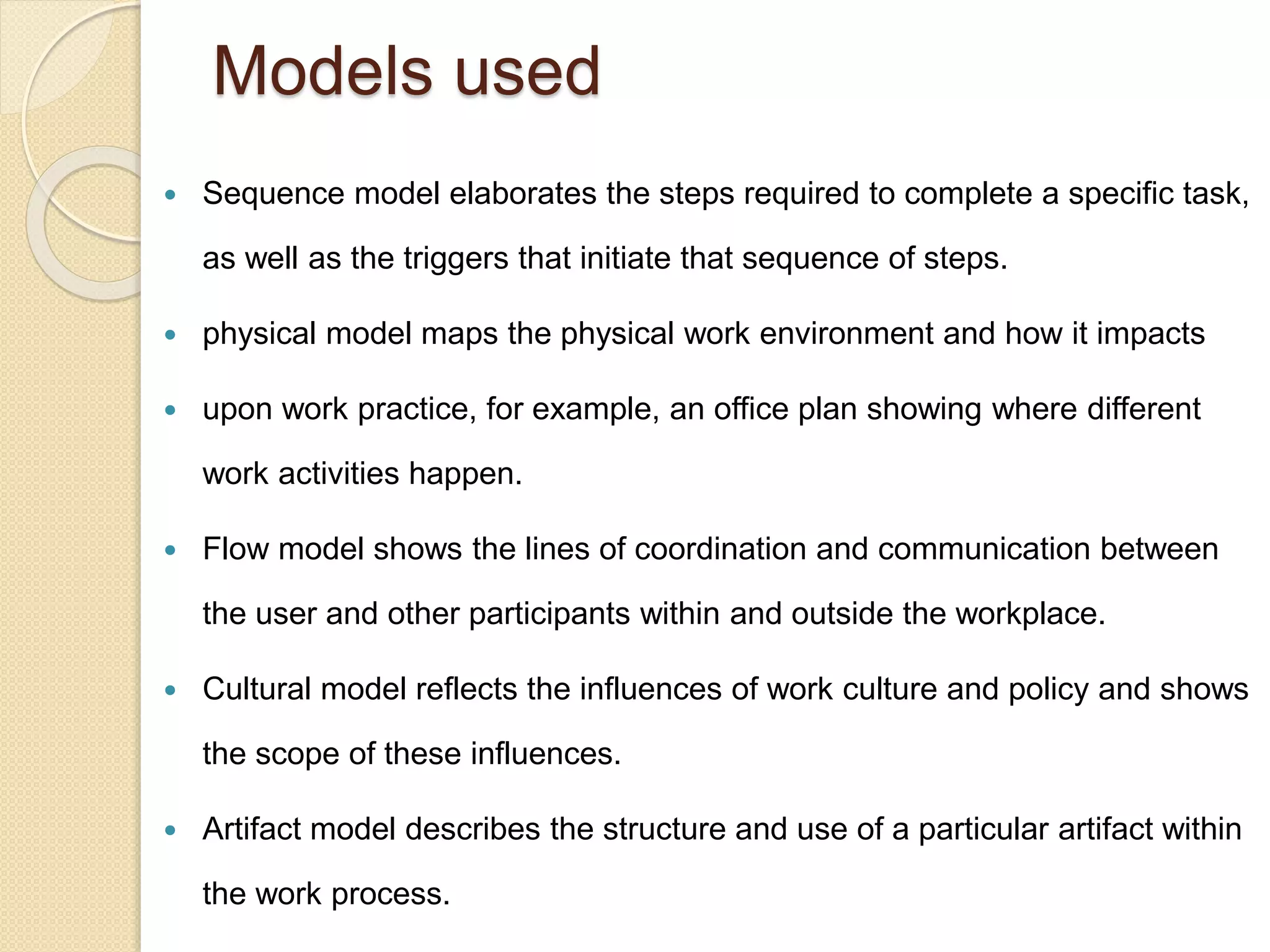This document discusses several socio-organizational issues and stakeholder requirements that must be considered when designing new computer systems. It describes organizational issues like power relationships, who benefits from systems, and ensuring all stakeholders can use systems. It also discusses capturing requirements through stakeholder analysis, socio-technical models, soft systems methodology, participatory design, and ethnographic methods. These aim to understand work contexts and stakeholder perspectives to develop systems that can be successfully adopted.
